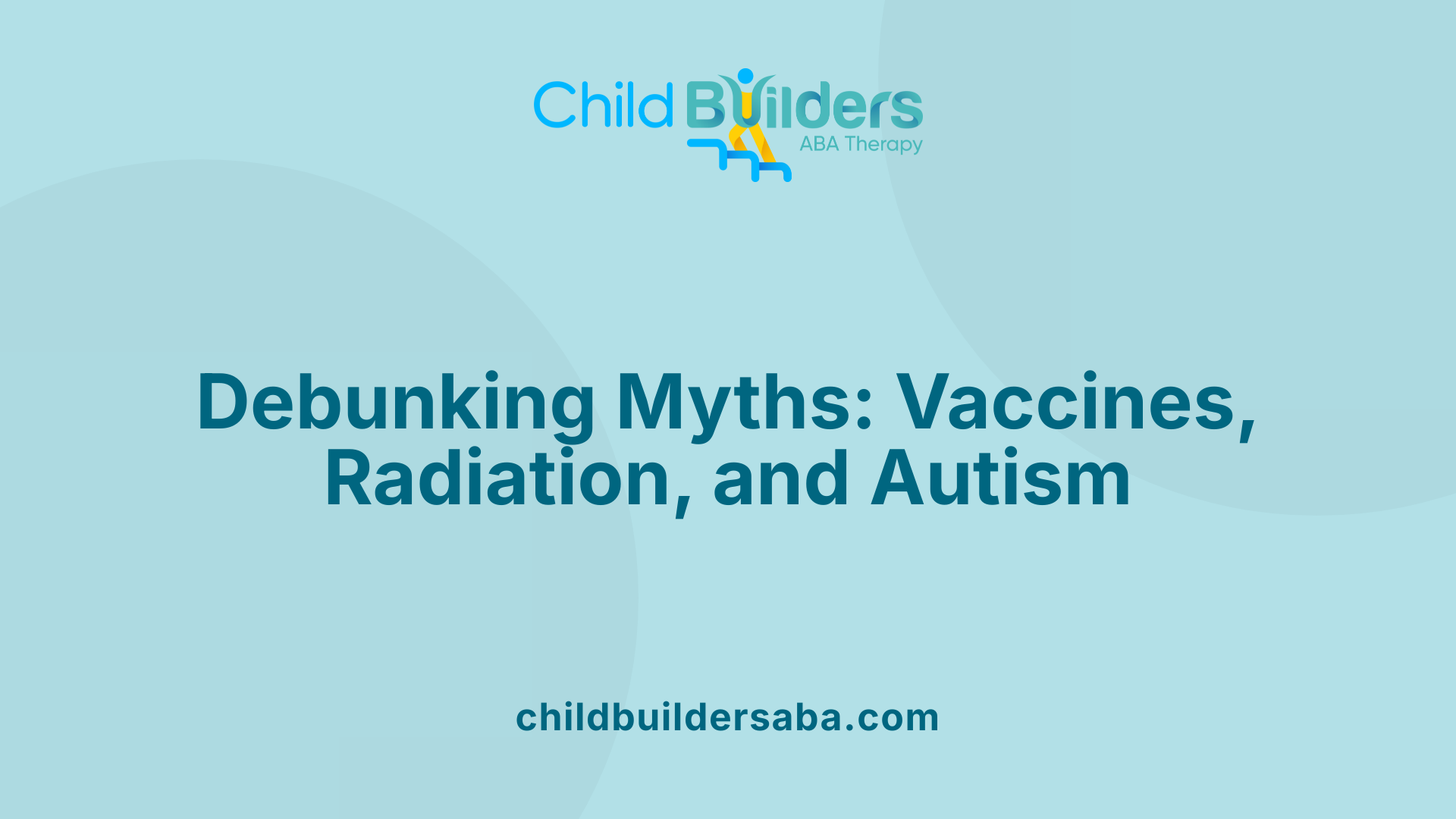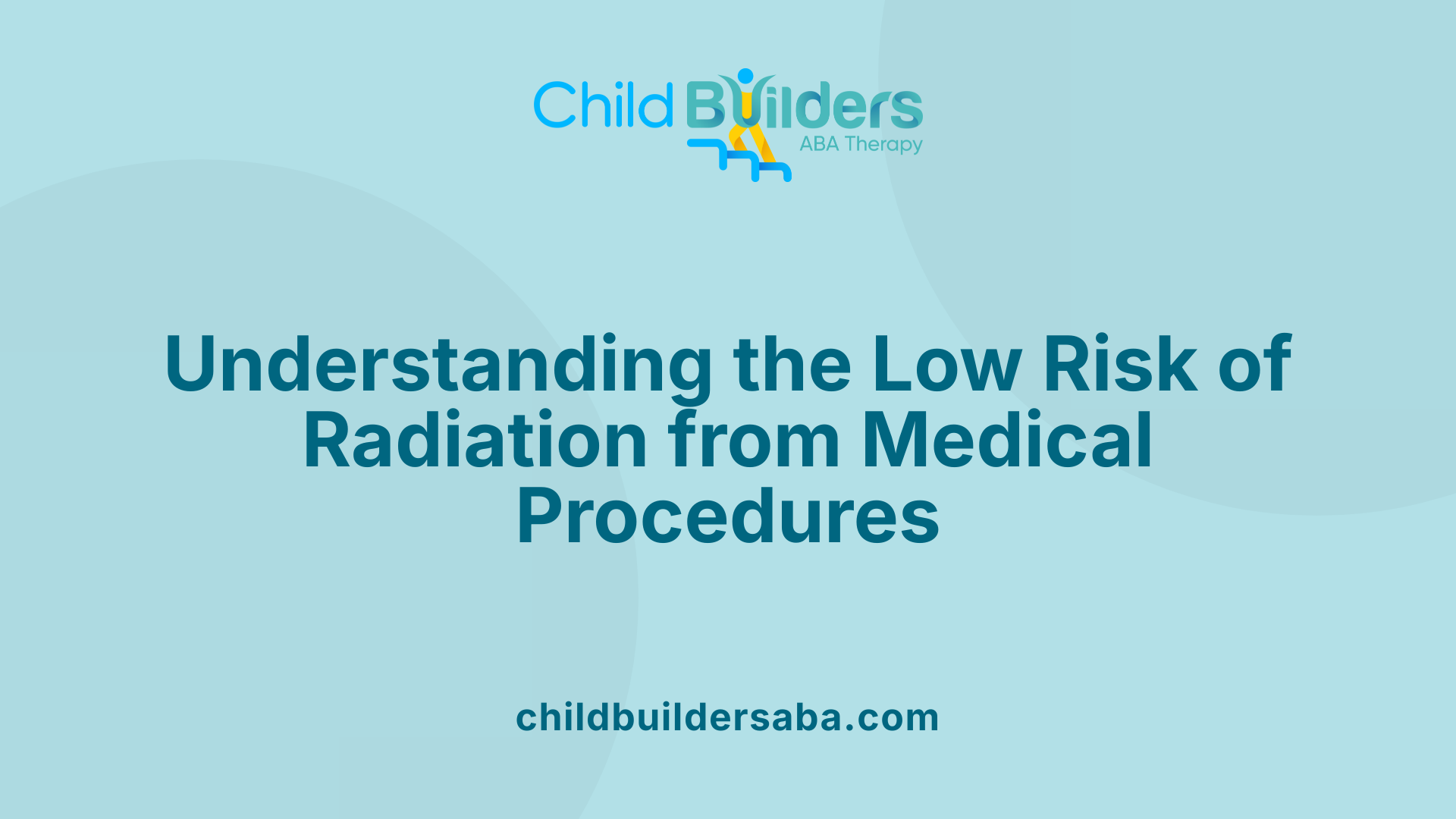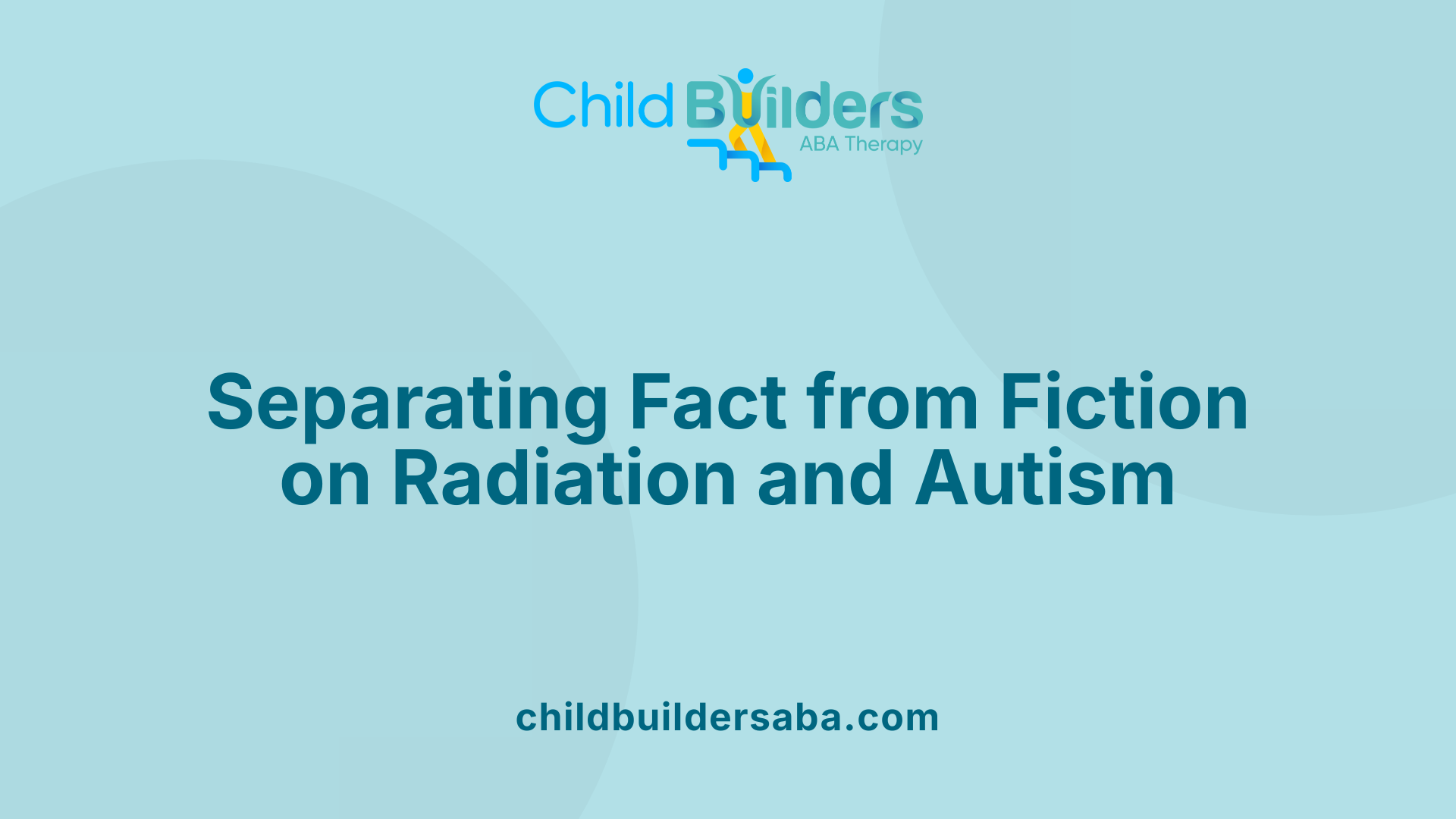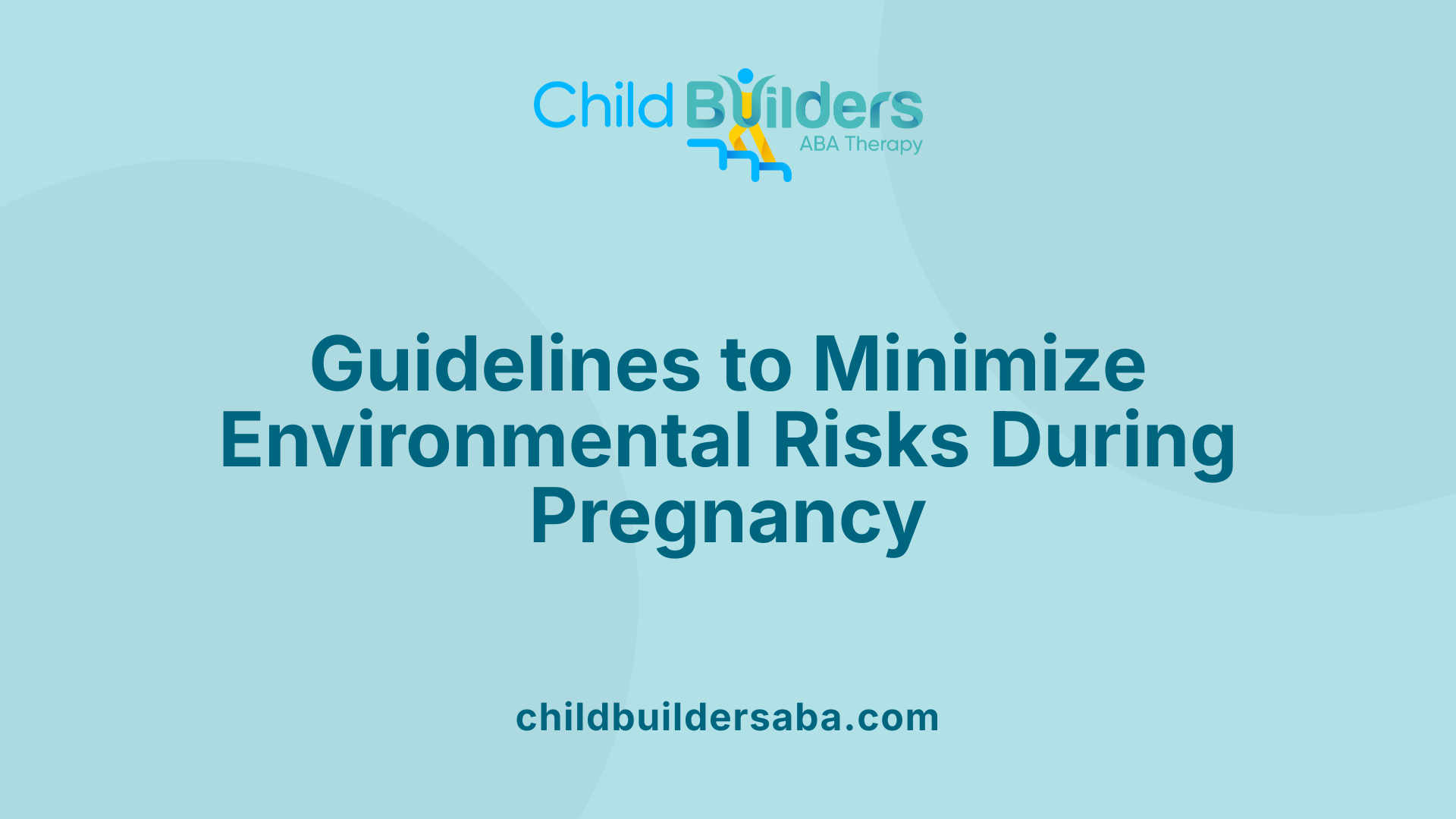Does Radiation Cause Autism?

Exploring the Complex Web of Autism Causes and Misconceptions
The question of whether radiation exposure from environmental or wireless sources contributes to autism spectrum disorder (ASD) is a subject of ongoing scientific inquiry and public concern. As understanding of autism's multifaceted etiology continues to evolve, it is crucial to differentiate fact-based evidence from misconceptions. This article delves into the known risk factors for autism, examines the scientific evidence surrounding radiation exposure, and clarifies common myths to provide a clear, evidence-driven perspective on this complex topic.
Genetic and Environmental Factors in Autism Development
What are the known factors contributing to the development of autism?
Autism Spectrum Disorder (ASD) is believed to develop through a combination of genetic and environmental influences. Research shows that numerous genes are involved in autism risk. Some gene mutations are inherited from parents, while others occur spontaneously, known as de novo mutations. These genetic variations can impact how neurons communicate and how different parts of the brain work together, influencing autism development.
Environmental factors also play a significant role. These include prenatal exposures such as air pollution and pesticides, which have been linked to increased autism risk. Additionally, factors like maternal obesity, diabetes, immune system conditions, extreme prematurity, very low birth weight, and birth complications that cause oxygen deprivation can contribute to autism. These influences may affect brain development during critical periods.
The interaction between genes and the environment appears to be particularly important. For example, certain genetic predispositions might make a child more vulnerable to environmental risks. Despite extensive research, no single cause of autism has been identified. Instead, it’s the complex interplay between multiple genetic and environmental factors that shape the likelihood of developing ASD.
It’s also important to clarify that vaccines do not cause autism. Decades of scientific studies have consistently shown no connection, and vaccines remain a safe and essential part of public health.
In summary, autism results from a multifaceted process involving inherited and spontaneously occurring genetic factors alongside environmental exposures. Understanding this complexity helps improve diagnosis and guides ongoing research efforts.
| Factor Type | Examples | Impact on Autism Risk |
|---|---|---|
| Genetic Factors | Inherited gene mutations, de novo mutations | Affect neural communication and brain development |
| Environmental Factors | Advanced parental age, prenatal pollution, pesticides, maternal health issues, birth complications | May increase vulnerability when combined with genetic predispositions |
| Gene-Environment Interaction | Genetic predisposition + environmental exposure | Amplifies autism risk, complex interaction at play |
Understanding these influences provides insight into autism’s complex origins and highlights the importance of comprehensive research and prevention strategies.
Current Scientific Understanding of Autism Causes

The Role of Genes in Influencing Neuronal Communication and Brain Networks
Research indicates that genetic factors significantly contribute to the development of Autism Spectrum Disorder (ASD). Many genes influence how neurons communicate within the brain and how different brain regions interact with each other. Changes or mutations in these genes can be inherited or occur spontaneously, known as de novo mutations. These genetic variations can affect synapse formation, neural signaling, and connectivity, all of which are crucial for typical brain development and function.
Impact of Environmental Exposures During Critical Developmental Periods
Environmental factors also play a role in autism risk, especially during sensitive periods of prenatal and early postnatal development. Factors such as advanced parental age, exposure to air pollution or pesticides during pregnancy, maternal health conditions like obesity, diabetes, or immune system disorders, and complications during birth—like oxygen deprivation or extreme prematurity—have been associated with increased risk. These exposures can influence fetal brain development and potentially disrupt normal neural circuit formation.
Lack of Evidence Linking Vaccines or Radiation to Autism
It is important to clarify that extensive scientific research has found no connection between vaccines and autism. Decades of studies uniformly support that vaccines do not cause autism spectrum disorder. Similarly, exposure to radiation has not been demonstrated as a risk factor for developing autism. Myths linking vaccines or radiation to autism have been thoroughly debunked and are not supported by credible scientific evidence.
How to Differentiate Scientific Facts from Myths?
To discern factual information from myths, rely on reputable sources like peer-reviewed research, official health organization guidelines, and expert consensus. Myths often stem from misconceptions, discredited studies, or anecdotal evidence lacking rigorous validation. For example, the false belief that vaccines cause autism originated from flawed research that has since been discredited.
Understanding that autism is a complex neurodevelopmental condition primarily influenced by genetic and environmental factors—without association to parenting, vaccines, or radiation—helps clarify common misconceptions. Recognizing autism's diversity and individual variability further supports the need for accurate, science-based knowledge.
Critical thinking and consulting credible scientific sources are essential tools for distinguishing facts from myths, ensuring a clear understanding of what causes autism and promoting informed discussions.
Radiation Exposure and Autism: What the Evidence Says

Is there scientific evidence linking radiation exposure to autism spectrum disorder?
Current scientific studies do not find a connection between radiation exposure from healthcare procedures, such as X-rays, and autism. For example, radiation doses from common diagnostic imaging like skull X-rays are very low, making it unlikely to cause any adverse brain development outcomes.
Research has looked into whether exposure to electromagnetic fields (EMF) and radiofrequency radiation could be related to autism, but so far, evidence is inconclusive. Most studies suggest that normal exposure levels, including those from household devices and mobile phones, do not increase autism risk.
Specifically, investigations into the effects of radiation from medical imaging have shown that such exposure does not lead to conditions like brain tumors or thyroid issues linked to radiation. No credible scientific data has demonstrated that radiation at typical exposure levels contributes to autism spectrum disorder.
Autism is generally understood to develop from a combination of genetic and environmental influences. Genetic factors, such as gene mutations and changes, play a major role by affecting how neurons communicate in the brain. Environmental influences—including parental age, prenatal exposures, maternal health, birth complications, and social determinants—also contribute.
While it’s important to consider all potential environmental factors, current research supports that radiation exposure from diagnostic procedures is not one of them. Instead, the focus remains on genetic and broader environmental factors for understanding autism risk.
| Aspect | Findings/Considerations | Details |
|---|---|---|
| Radiation from medical imaging | No established link; low doses considered safe | Studies show no increase in autism risk with imaging procedures |
| Electromagnetic fields (EMF) | No conclusive evidence of association | Typical exposure levels from household devices are safe |
| Environmental influences | Significant role in autism development | Parental age, prenatal factors, birth complications |
| Genetic factors | Major contributors; influence neuron communication | Gene mutations, inherited or de novo changes |
Understanding the multifaceted origins of autism underscores the importance of comprehensive research. Despite concerns about environmental exposures, current evidence indicates that radiation from medical procedures does not pose a risk for autism spectrum disorder.
Misconceptions Surrounding Radiation and Autism

Are there misconceptions about radiation causing autism?
Yes, there are common myths and misconceptions suggesting that radiation, including exposure to environmental or wireless radiation, could cause autism. These claims often gain traction through sensationalized media stories or anecdotal reports.
Current scientific research, however, does not support the idea that radiation from environmental sources is linked to autism. Most studies have not found a causal connection between radiation exposure and the development of autism spectrum disorder (ASD).
Some recent studies have explored whether prenatal or neonatal exposure to radiofrequency (RF) radiation might be associated with increased autism risk. While these initial findings are intriguing, they are preliminary and do not establish a direct cause-and-effect relationship. Further research is necessary to understand any potential risks fully.
The rise in autism diagnosis over recent decades has largely been due to increased awareness, broader diagnostic criteria, and improved screening processes, not exposure to radiation. These factors have led to more children being identified and diagnosed with ASD, reflecting better recognition rather than an actual surge in cases caused by environmental radiation.
Distinguishing unsupported claims from well-established science is crucial. The consensus among scientists and health organizations is clear: radiation from environmental or wireless sources is not a proven cause of autism.
Why is critical thinking about autism and radiation important?
Understanding the facts helps prevent the spread of misinformation that can cause unnecessary fear and divert attention from proven causes and effective interventions. Developing scientific literacy enables individuals to evaluate claims critically and rely on evidence-based information.
In summary, while some hypotheses about radiation exposure and autism are under investigation, existing research does not support the idea that radiation causes autism. The emphasis remains on understanding genetic and environmental influences that have a substantial scientific backing, such as genetic mutations and certain prenatal environmental factors.
Safety Measures and Precautionary Guidelines

Are there environmental safety measures recommended to minimize autism risk if any?
Research indicates that some environmental factors may influence the risk of developing autism spectrum disorder (ASD). While genetics play a significant role, environmental influences like exposure to certain chemicals and pollutants also matter.
One area gaining attention is electromagnetic field (EMF) exposure from household devices. Some studies suggest that EMF radiation from sources such as microwave ovens, cordless phones, and Wi-Fi routers could potentially have biological effects, including DNA damage or cellular disruption. Since these effects might impact brain development during pregnancy and early childhood, taking precautionary steps can be wise.
To minimize potential risks, experts recommend reducing exposure to EMF sources. Practical measures include maintaining distance from devices emitting non-ionizing radiation, turning off wireless devices when not in use, and limiting the use of cordless phones or microwaves during pregnancy and early childhood. Although clear safety guidelines are still under development, adopting these precautions forms part of a cautious approach.
Additionally, avoiding exposure to environmental pollutants like air pollution, pesticides, and maternal health issues such as obesity or diabetes can also help reduce overall risk. Pregnant women are encouraged to seek medical advice on minimizing environmental hazards.
Ongoing scientific research aims to establish more definitive safety standards. Continued investigation into environmental influences, including EMF exposure, will help shape comprehensive guidelines to protect developing brains.
| Type of Exposure | Examples | Recommended Precautions |
|---|---|---|
| Electromagnetic Fields | Microwave ovens, Wi-Fi, cordless phones | Limit use, maintain distance, turn off devices not in use |
| Chemicals and Pollutants | Air pollution, pesticides | Avoid high-pollution areas, use air purifiers |
| Maternal Health Factors | Obesity, diabetes, immune disorders | Regular prenatal check-ups, healthy lifestyle |
While current evidence does not confirm a direct cause-and-effect relationship, these measures are based on a preventive principle aimed at reducing potential risk factors.
In summary, being mindful of environmental exposures during pregnancy and early childhood, especially EMF radiation, is a prudent step. Ongoing research will further clarify these relationships and help develop formal safety guidelines.
Conclusion: Clarifying the Relationship Between Radiation and Autism
What does current research say about the causes of autism?
Research indicates that autism spectrum disorder (ASD) develops from a mix of genetic factors and environmental influences. Genetic influences include changes or mutations in genes, which can either be inherited from parents or occur spontaneously. These genetic factors usually impact how neurons communicate within the brain or how different regions of the brain work together.
Environmental factors that can increase autism risk include advanced parental age at the time of conception, prenatal exposure to air pollution or pesticides, maternal obesity, diabetes, immune system disorders, extreme prematurity, very low birth weight, and complications during birth such as oxygen deprivation.
Is there any link between vaccines and autism?
Extensive scientific research has consistently demonstrated that vaccines do not cause autism. Despite some misinformation, decades of credible studies have shown no connection between vaccination and the development of ASD. Vaccination remains a safe and effective method for preventing many serious diseases.
Why has autism prevalence increased?
The apparent rise in autism diagnoses is largely attributed to factors like increased awareness, broader diagnostic criteria, improved screening tools, and standardized screening processes. These changes mean more cases are identified now than in the past, not necessarily that more children are developing autism.
What is the importance of understanding autism's causes?
Understanding that autism results mainly from genetic factors and complex interactions with environmental factors helps to inform better research, healthcare, and public policies. Relying on scientific evidence helps to dispel myths and supports informed decision-making for families, educators, and healthcare providers.
| Aspect | Details | Additional Info |
|---|---|---|
| Genetic Influences | Gene mutations, inherited or de novo | Affect neural communication, brain region interaction |
| Environmental Factors | Parental age, pollution, maternal health, birth complications | Can influence autism risk, but are not sole causes |
| Common Myths | Vaccines cause autism | Dispelled by scientific consensus |
| Increase in Autism Cases | Better detection and awareness | Not necessarily an increase in actual cases |
This comprehensive understanding underscores the importance of relying on trustworthy research rather than myths or misinformation when considering autism’s causes.
Empowering Informed Perspectives on Autism and Radiation Risks
In summary, while the question of radiation's role in autism remains a topic of interest and investigation, the current scientific consensus clearly indicates that radiation does not cause autism. Genetic factors and environmental influences during crucial developmental periods play more significant roles. It remains essential for the public to rely on high-quality, peer-reviewed research and to be cautious of myths and misinformation. Ongoing scientific studies continue to explore environmental risks, but at present, radiation exposure—from medical imaging or environmental sources—is not considered a causal factor for autism spectrum disorder. Promoting awareness based on facts can help dispel fears and support informed decision-making.
References
- What causes autism? | Autism Speaks
- What causes autism? | Autism Speaks
- Autism spectrum disorder - Symptoms and causes - Mayo Clinic
- Autism | National Institute of Environmental Health Sciences
- Autism Spectrum Disorder (ASD) Symptoms & Causes
- Causes, Signs and Symptoms - Autism Science Foundation
- No danger of cancer, autism, or fertility from pediatric x rays - HPS
- A possible association between fetal/neonatal exposure ... - PubMed
- Debunking 8 Autism Myths and Misconceptions





































































































